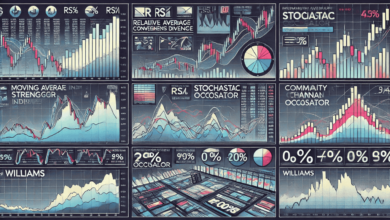From Payouts to Profits: The Ausschütter Advantage in Investing

Ausschütter is a German word that translates to “payer” or “distributor,” it is often used in the context of dividend payouts in finance. Companies that generate profits may distribute some of these earnings to their shareholders as dividends. This practice can significantly impact both the company’s valuation and the investors’ portfolios. In this comprehensive guide, we will delve into the intricacies of Ausschütter, their significance, types, and strategies to optimize returns from dividend-paying stocks.
Understanding Ausschütter
Definition and Importance
An Ausschütter, in the financial world, typically refers to a company or fund that regularly distributes a portion of its profits to shareholders. This payout can come in various forms, including cash dividends, stock dividends, or other assets. These distributions are a crucial indicator of a company’s financial health and profitability, providing investors a tangible return on their investments.
Types of Dividends
- Cash Dividends: The most common form is when companies distribute earnings in cash directly to shareholders. This method is straightforward and offers immediate liquidity to investors.
- Stock Dividends: Instead of money, companies may issue additional shares of stock. This increases the number of shares each investor owns, which can be beneficial if the company continues to grow.
- Special Dividends are non-recurring distributions typically resulting from extraordinary profits or asset sales. They are not expected to be regular but can provide substantial returns.
- Preferred Dividends: Issued to holders of preferred shares, these dividends are typically fixed and paid out before ordinary stock dividends.
Significance for Investors
For investors, Ausschütter or dividend-paying stocks represent a reliable income stream. They are beautiful for retirees or those seeking passive income. Dividends can be reinvested to purchase more shares, compounding returns over time. Moreover, a consistent dividend payout policy signals company stability and confidence in its future earnings.
Evaluating Ausschütter Companies
Financial Metrics
When assessing potential Ausschütter investments, several key financial metrics should be considered:
- Dividend Yield: Calculated as the annual dividend per share divided by the stock price, this metric helps investors understand the return on investment from dividends alone.
- Payout Ratio: This is the proportion of earnings paid out as dividends. A lower ratio suggests sustainability and room for future dividend increases, while a very high ratio may indicate potential financial strain.
- Dividend History: Companies with a long history of steady or increasing dividends are often more reliable. Consistency in payouts reflects stable earnings and prudent financial management.
- Earnings Growth: Sustainable dividend growth is supported by consistent earnings growth. Companies with solid revenue and profit trends are better positioned to maintain or increase dividends.
Industry and Economic Considerations
Different industries have varying propensities for paying dividends. For instance, utilities and consumer staples often have higher payout ratios due to stable cash flows. Conversely, technology and growth-oriented companies might reinvest profits into the business, resulting in lower dividend payouts. Economic conditions also play a significant role; companies may cut dividends during downturns to preserve cash.
Strategies for Investing in Ausschütter
Dividend Growth Investing
This strategy focuses on companies with a history of growing their dividends. The idea is to invest in firms that pay dividends and increase them over time, providing a hedge against inflation and enhancing overall returns. Key aspects to look for include:
- Consistent Dividend Increases: Companies that have raised dividends for several consecutive years.
- Moderate Payout Ratios: Ensuring the dividend increases are sustainable.
- Strong Earnings and Cash Flow: Supporting the capacity for future dividend hikes.
High Dividend Yield Investing
Investors seeking immediate income may focus on stocks with high dividend yields. However, balancing yield with risk is crucial, as high yields can sometimes indicate underlying financial troubles. Consider:
- Sustainability of Yield: Analyzing the company’s payout ratio and financial health.
- Diversification: Spreading investments across different sectors to mitigate risk.
- Quality of Earnings: Ensuring that robust and stable earnings support high yields.
Reinvesting Dividends
Reinvesting dividends through Dividend Reinvestment Plans (DRIPs) allows investors to purchase additional shares, compounding returns over time. This strategy is compelling due to the effects of compounding interest, where reinvested dividends generate their dividends.
Tax Considerations
Dividends may be subject to taxation, impacting overall returns. It’s essential to understand the tax implications in your jurisdiction and explore tax-advantaged accounts like IRAs or 401(k)s in the United States, where dividends can grow tax-free or tax-deferred.
Risks Associated with Dividend Investing
Dividend Cuts
One of the primary risks is the potential for dividend cuts, which can occur if a company faces financial difficulties. This reduces income and can lead to a decline in stock prices.
Interest Rate Fluctuations
Rising interest rates can make dividend-paying stocks less attractive than fixed-income securities like bonds, leading to price declines in high-dividend stocks.
Market Volatility
Economic downturns and market volatility can affect all investments, including dividend-paying stocks. Diversification and careful selection of stable companies can help mitigate this risk.
Real-World Examples of Ausschütter Companies
Established Dividend Payers
- Procter & Gamble (P&G): Known for its extended dividend payments and increased history, P&G is a staple in many dividend portfolios.
- Johnson & Johnson (J&J): Another reliable dividend payer with a consistent track record of growth and payouts.
High Yield Stocks
- AT&T: Offering high yields, AT&T is attractive for income-focused investors, though it’s essential to consider its debt levels and business challenges.
- ExxonMobil: With a significant yield, ExxonMobil provides substantial income, supported by its extensive operations in the energy sector.
Growth-Oriented Dividend Payers
- Apple Inc.: Though traditionally a growth stock, Apple has started paying dividends, combining growth potential with income.
- Microsoft: Balancing growth and dividends, Microsoft offers investors stability and capital appreciation.
Conclusion
Investing in Ausschütter or dividend-paying companies can be rewarding, providing both income and the potential for capital growth. By understanding the different types of dividends, evaluating vital financial metrics, and implementing strategic approaches such as dividend growth or high-yield investing, investors can enhance their portfolios and achieve their financial goals. However, it’s crucial to remain mindful of the risks involved and diversify investments to mitigate potential downsides. Whether you’re a retiree seeking steady income or an investor looking for compounding returns, Ausschütter stocks offer diverse opportunities to meet your investment objectives.
You May Also Read: Sargarpgio: Empowering Financial Analysis with Artificial Intelligence




